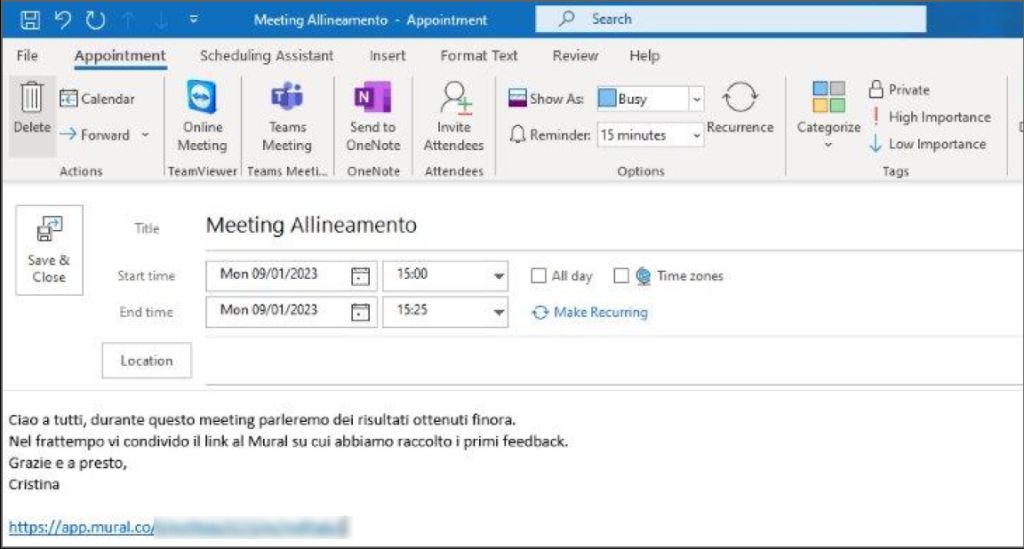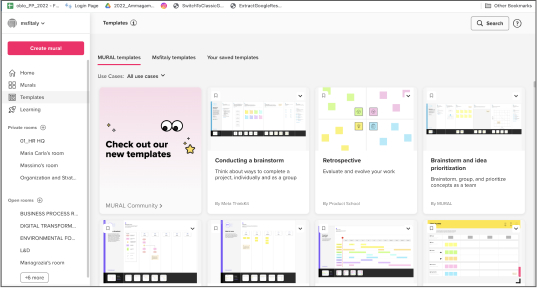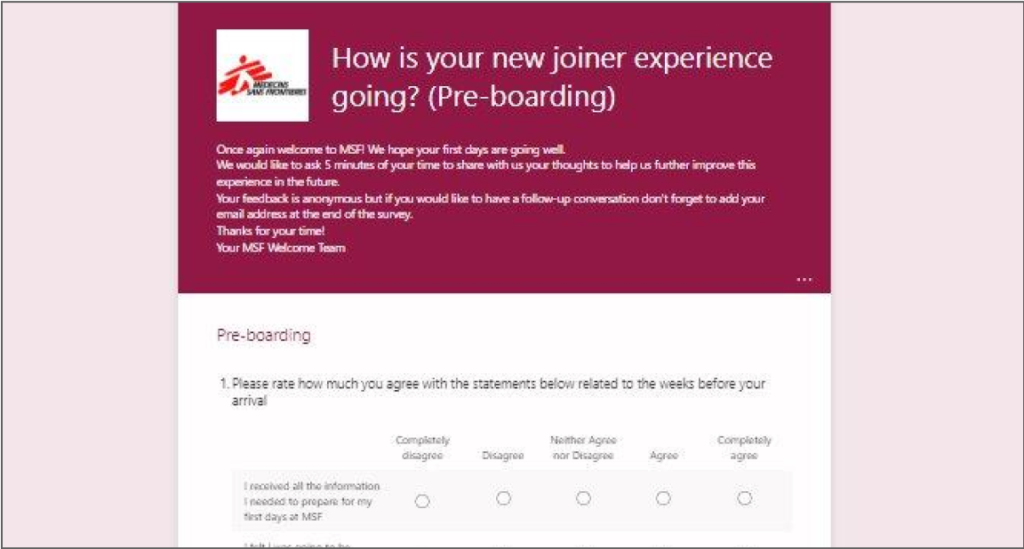Useful things to remember
Index
Define the goal
Do you want to add a new practice?
Suggest a practice01
Define the goal
Clarify the objective of the collaborative working session, who will attend and whether the session is going to be hosted in person or remote.
Start sending invitations so that people could block their agenda for the session, and include session objective and agenda already in the invitations (check “How to organize and run a meeting” to know more about that practice). For more detailed info about webinars, click here.
Tip: send links and resources in advance
If there’s already a Mural board or other relevant materials the participants could check before the session, it’s worth adding them as links or attachments when sending the invitations.

Warning: take care of your colleagues’ well-being
If there’s already a Mural board or other relevant materials the participants could check before the session, it’s worth adding them as links or attachments when sending the invitations.
Read less
02
Design the session
Workshops are intended for doing things and they should generate tangible outcomes. In order to reach this goal, think of what type of exercises and activities could be conducted, and how long each of them will take. In this way, you will be able to further refine the agenda, and organize how to moderate the session.
Tip: organize break-out groups
Based on the amount of participants you may consider if it’s better to keep the whole session as a single plenary activity, or to alternate plenary moments, break-out groups and even individual moments.
This alternation is particularly critical when the number of participants is high (e.g. above 6-7 participants), so that each of them could actively contribute and feel engaged in the session.
In person it’s easier to physically split people in groups by using separate tables or rooms, but you can do the same in Teams Calls, by using the specific “break-out rooms” button and setting the number of rooms you would need.
Read more
03
Set your boards
For each activity of the workshop, take time to think what could be the best support.
If the collaborative working session is remote, you can consider to use a board in Mural, and include or create there the type of materials needed to ease the conversation. Once the session starts, share directly the link to the board to all participants.
If the session is happening in presence, you could think of a physical board to be used with post-it notes, or even print specific materials to be filled together.
Tip: don’t start from scratch
When running sessions on Mural, you can start from a useful set of predefined templates and canvas that could facilitate the activity.

Tip: test it!
If possible, organise a dry-run session with 1 or 2 colleagues in order to go through the workshop flow with them and verify if the exercises could be easily understood and conducted. If the number of participants is high (e.g. 15-20 or even more people) search for allies within your team who could co-facilitate the session.
Read more
04
Run the session
Lead the working session by explaining the goal of each activity and facilitating the conversation. Remember to keep track of time, in order to cover all the topics as planned and get to the desired outcomes.
Tips: mix participants
If the workshop involves people from different departments or units, try to mix them in different break-out groups, so they could exchange competences and experiences with others.
Read more
05
Collect feedback
At the end of the session, ask attendees what they thought about the workshop. Feedback is what enables you to improve and become a more effective facilitator.

Tip: use Kahoot or Microsoft Form
In order to make the feedback collection engaging and immediate, you could prepare it using a platform like Kahoot, Mentimeter or Microsoft Form – and send the link to participants. Form is better than Teams Polls because it allows to have a group form, and display group results.
Read more